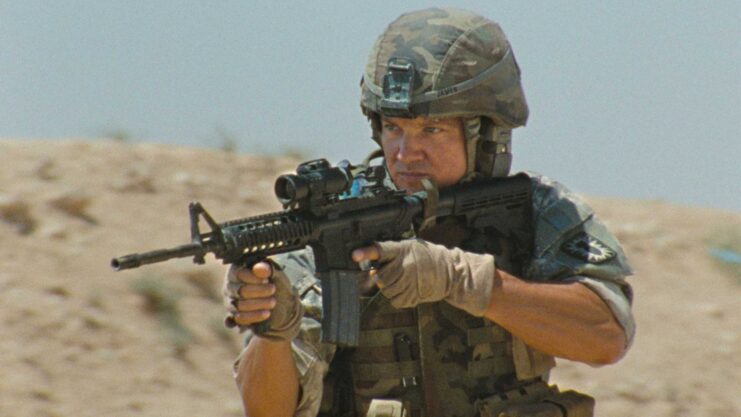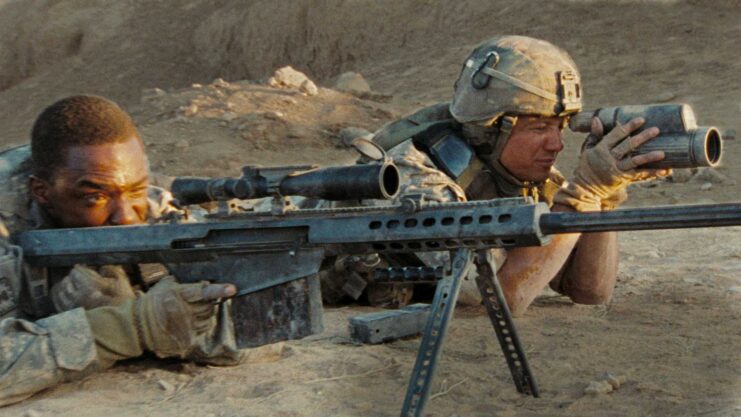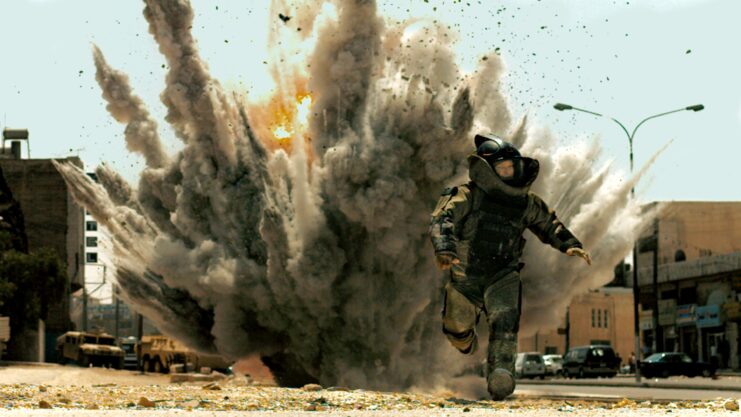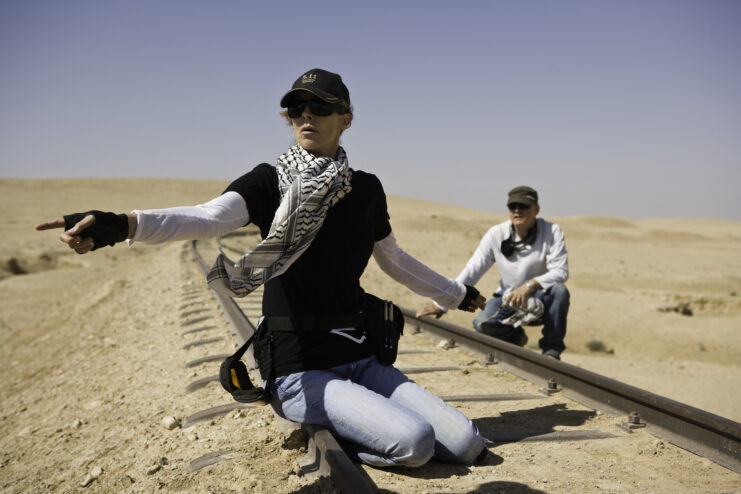‘The Hurt Locker’ Was a Box Office Flop, Despite Being a Critically-Acclaimed Film
Kathryn Bigelow’s The Hurt Locker (2008) saw Jeremy Renner portray a character serving in the Iraq War. While the film did poorly upon its debut in theaters, it’s hailed by critics as one of the best of its time. It dominated the 82nd Academy Awards, taking home six Oscars, including the ones for Best Picture and Director, and has since cemented itself in the annals of war film history.
The Hurt Locker has an immersive plot

The Hurt Locker opens with the death of Staff Sgt. Matthew Thompson during a failed attempt to destroy an IED. The death weighs heavily on his comrade, Spc. Owen Eldridge, who blames himself for not taking the opportunity to kill the man who detonated the bomb when he first identified him.
Enter Jeremy Renner’s Sgt. First Class William James, who takes Thompson’s place and has a rocky relationship with squad mate Sgt. J.T. Sanborn. In several instances, James diffuses bombs by hand, a method Sanborn doesn’t like to employ. He also doesn’t thoroughly communicate his plans, which rubs Sanborn the wrong way.
Later, when the team goes into the desert to safely detonate the explosives they’ve collected, Sanborn discusses the opportunity of fragging James, given his conduct, but Eldridge talks him out of it. On their way back, they stops to help British PMCs disguised as locals, who’ve become stranded with a flat tire. It’s at this moment that they’re fired upon by insurgents.
This situation showcases the teams ability to work together and strengthens their bond.
The Hurt Locker showcases the emotional toll of the Iraq War

Ordered to participate in a petrol tanker detonation, James decides to hunt for insurgents in the area. He’s accompanied by Sanborn and Eldridge, despite their initial protests.
The trio split up, leading to Eldridge’s capture. James and Sanborn successfully rescue him, but James accidentally shoots him in the leg in the process. This affects him greatly, with James nearly breaking down in the shower for having injured his comrade. When Eldridge is airlifted for surgery, he angrily expresses the blame he feels toward James for causing the injury, widening the divide between the two.
The day prior to the end of their deployment, the squad is called to disarm a suicide bomb strapped to a civilian against his will. Unfortunately, James is unable to disarm it before the timer expires, and the team is forced to abandon the man. The impact of the situation causes Sanborn to breakdown and reveal he no longer wants to serve and must leave Iraq before he’s killed there.
When their rotation ends, James goes back to his home and family. However, he struggles to readjust to civilian life, and this puts a strain on his relationship with his wife and child. He ultimately decides to return to Iraq, admitting to his infant son that it’s the “one thing” he knows he loves.
The final scene shows James having returned to Iraq, ready to serve another tour of duty.
A poor box office reception

The Hurt Locker didn’t have a conventional film release. It made its world premiere at the Venice Film Festival in 2008 and hadn’t, at this point, secured a North American distributor. Typically, the festival helps movies to achieve this, but The Hurt Locker was unable to do so by its end.
The North American premiere occurred at the Toronto Film Festival a few weeks later. It was there that The Hurt Locker was finally taken on by Summit Entertainment for distribution. Purchased for the low price of $1.5 million, the film was an obvious gamble, as releases about the Iraq War were typically not well-received by audiences. Being released while the conflict was still ongoing, distributors and audiences were apprehensive of how it approached the topic.
The film opened in limited release across the United States on June 26, 2009, playing in only four theaters. It grossed $145,352 on its opening weekend and gained traction as the 82nd Academy Awards approached, hitting its domestic peak at $17 million. Overall, the film earned less than $50 million.
Sweeping the 82nd Academy Awards

Despite having made its debut in 2008, the decision to skip a fall or even winter release in America resulted in The Hurt Locker not being eligible for inclusion at the 2009 Academy Awards. The rules for consideration require that a film be screened publicly within that calendar year, forcing it to wait until the 2010 ceremony.
Despite it being a box office flop, as well as its slow theatrical release, the film did extraordinarily well in the eyes of critics. By the end of 2009, it had made it onto virtually all major “Best Films of the Year” lists, including the American Film Institute, The New York Times and Sight & Sound. It was hailed for its ability to create intense tension and drama, while also being a non-divisive war thriller.
By the time the 82nd Academy Awards came around, The Hurt Locker had earned nine nominations, tying it with the film that was expected to sweep every category it was nominated for: James Cameron‘s Avatar (2009). By the end of the ceremony, the film walked away with six wins, including Best Sound Editing, Best Sound Mixing, Best Film Editing, Best Original Screenplay, Best Director and Best Picture. Kathryn Bigelow, in particular, became the first woman to win the Oscar for Best Director.
More from us: Forget CGI! A B-17 Was Actually Crashed During the Filming of ‘Twelve O’Clock High’
Outside of the Academy Awards, The Hurt Locker also won multiple awards at other ceremonies, including the Director’s Guild and Writer’s Guild of America Awards and the BAFTAs.
The post ‘The Hurt Locker’ Was a Box Office Flop, Despite Being a Critically-Acclaimed Film appeared first on warhistoryonline.
‘The Hurt Locker’ Was a Box Office Flop, Despite Being a Critically-Acclaimed Film
Philippines Truth
Post a Comment
0 Comments